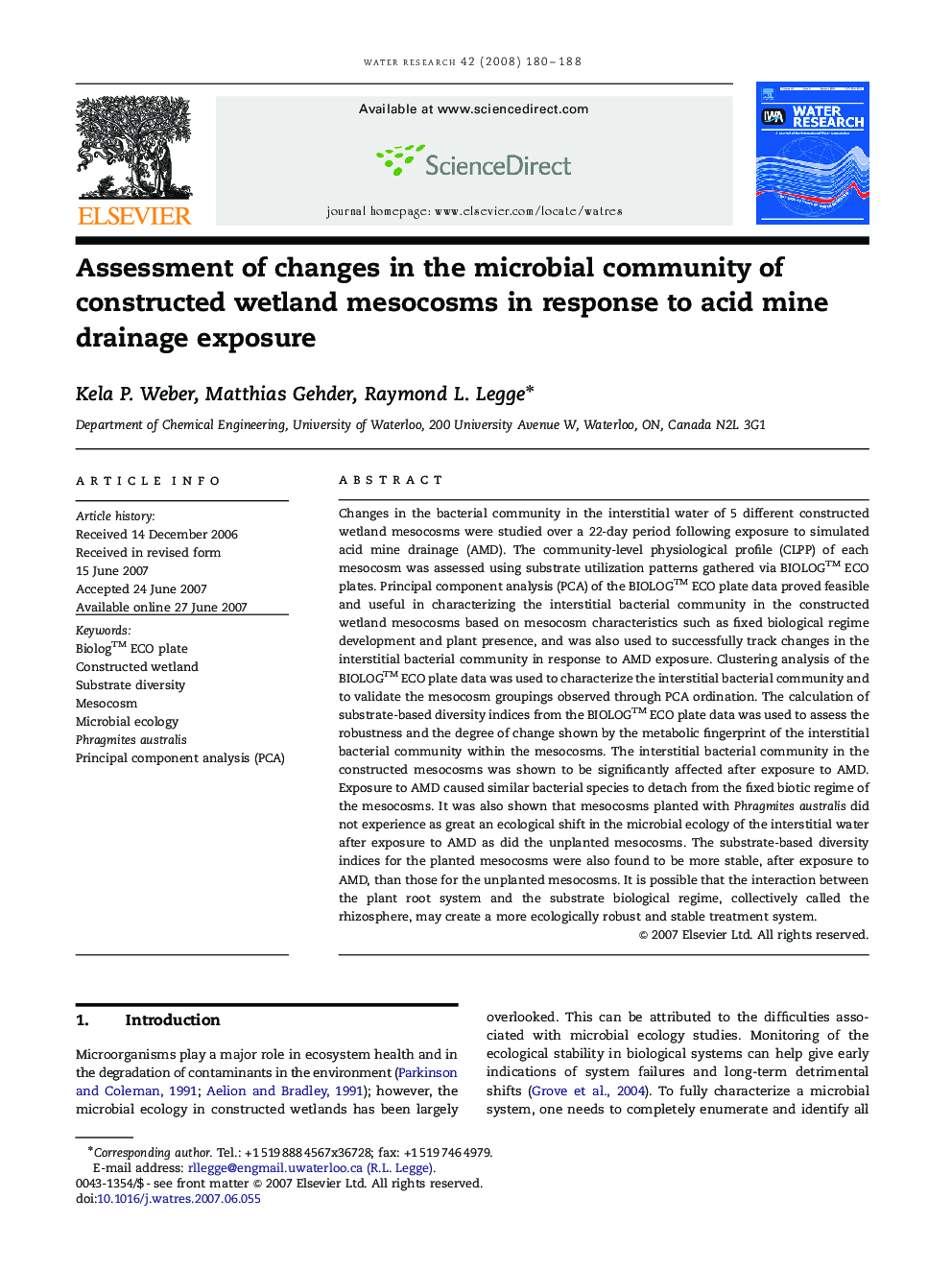| Article ID | Journal | Published Year | Pages | File Type |
|---|---|---|---|---|
| 4485751 | Water Research | 2008 | 9 Pages |
Changes in the bacterial community in the interstitial water of 5 different constructed wetland mesocosms were studied over a 22-day period following exposure to simulated acid mine drainage (AMD). The community-level physiological profile (CLPP) of each mesocosm was assessed using substrate utilization patterns gathered via BIOLOG™ ECO plates. Principal component analysis (PCA) of the BIOLOG™ ECO plate data proved feasible and useful in characterizing the interstitial bacterial community in the constructed wetland mesocosms based on mesocosm characteristics such as fixed biological regime development and plant presence, and was also used to successfully track changes in the interstitial bacterial community in response to AMD exposure. Clustering analysis of the BIOLOG™ ECO plate data was used to characterize the interstitial bacterial community and to validate the mesocosm groupings observed through PCA ordination. The calculation of substrate-based diversity indices from the BIOLOG™ ECO plate data was used to assess the robustness and the degree of change shown by the metabolic fingerprint of the interstitial bacterial community within the mesocosms. The interstitial bacterial community in the constructed mesocosms was shown to be significantly affected after exposure to AMD. Exposure to AMD caused similar bacterial species to detach from the fixed biotic regime of the mesocosms. It was also shown that mesocosms planted with Phragmites australis did not experience as great an ecological shift in the microbial ecology of the interstitial water after exposure to AMD as did the unplanted mesocosms. The substrate-based diversity indices for the planted mesocosms were also found to be more stable, after exposure to AMD, than those for the unplanted mesocosms. It is possible that the interaction between the plant root system and the substrate biological regime, collectively called the rhizosphere, may create a more ecologically robust and stable treatment system.
